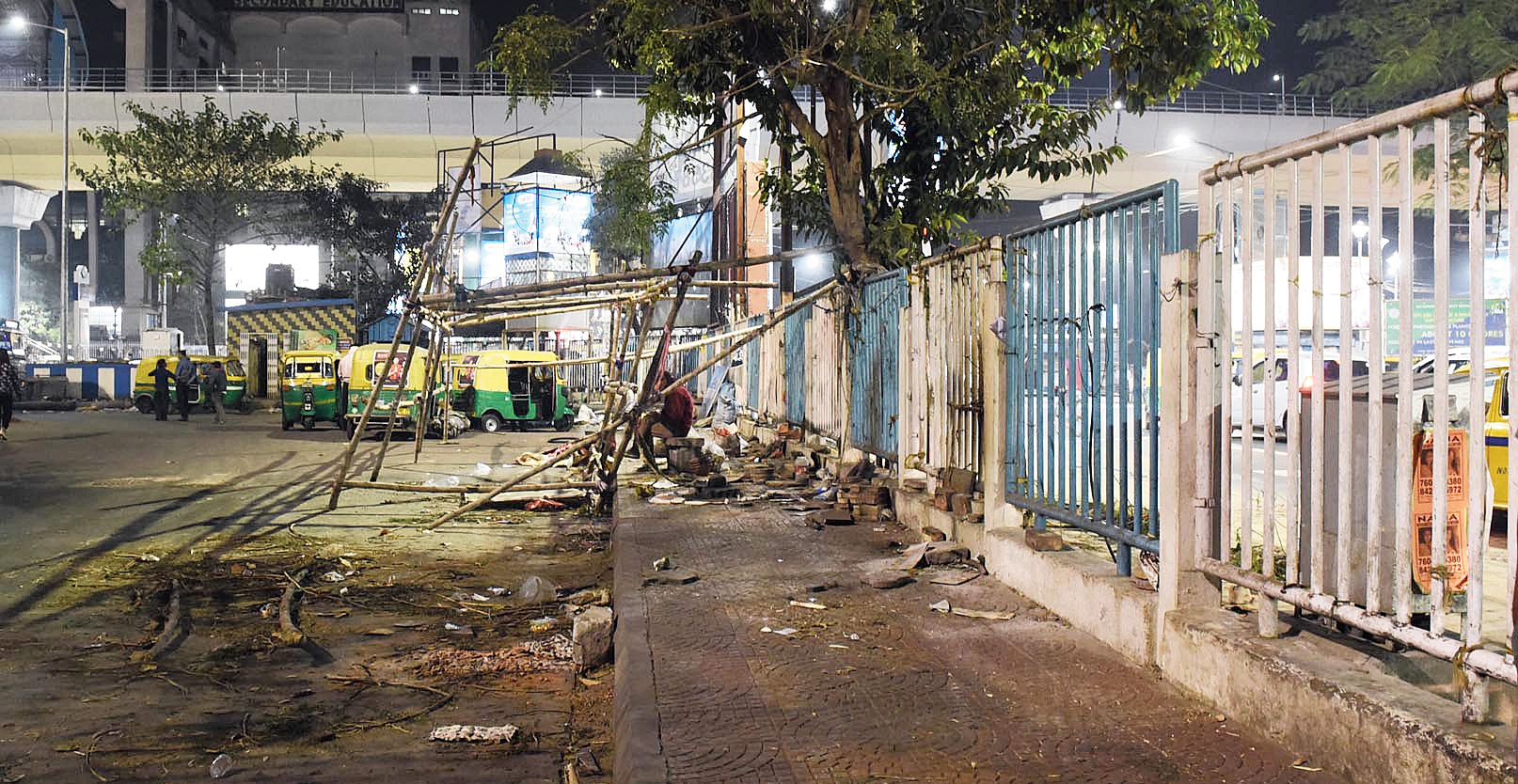A group of architects has suggested that stalls on the Gariahat footpaths be made of fire-retardant materials with a translucent shed that would allow sunlight to reach the sidewalks.
Abin Chaudhuri, who led the group, has shared the plan with the Gariahat hawkers’ union. A leader of the union said they would hand over the plan to mayor Firhad Hakim.
The mayor had on Monday shown Gariahat hawkers a model stall, which was made of mild steel and had an opaque shed.
The mayor has said the stalls will have wheels so hawkers could take them away at night. The architects’ plan, however, has no provision for wheels for the stalls.
“Where will the carts be at night? Some stalls were made with wheels. But does any of them leave the footpath at night? Such a plan is not going to work,” said Chaudhuri, founder of Kolkata Architecture Foundation.
“The materials need to be fire-retardant. That is why I have suggested that the stalls be made of corrugated sheets, e-boards and cement boards. These are non-combustible materials,” Chaudhuri said.
The foundation had drawn up the plan in December following a request from police. The police were shown the plan but matters did not progress much.
The stalls in the foundation’s plan have room for hawkers inside, while sellers will stand on the footpath.
According to the government’s plan, seller and buyer both will stand on the footpath.
The civic body’s model stall is 4ft wide and 6ft long. Many hawkers are unhappy with the width, calling it too small.
Chaudhuri said the foundation had not suggested any dimensions for the stalls because those would depend on the wares each would sell. “A stall that sells earrings would need lesser space than the one that sells garments. Some products need better display to attract customers,” he said.
Hakim had suggested distributing umbrellas to all hawkers so they would not have to set up a semi-permanent shed. Chaudhuri said umbrellas would not protect the hawkers and their wares from rain during the monsoon.
A sturdy shed is the best solution, the architect said. “I have suggested a translucent roof for the stalls because that will allow sunlight to enter. It will reduce consumption of electricity and make the footpaths less congested,” Chaudhuri said.
The stalls, according to the plan, will be about 8ft tall and will not block the signboards of the permanent shops. After every 10 stalls there will be a small exit. The exits will facilitate air circulation and enable hawkers and others to flee if there is an emergency.
Each stall will cost around Rs 35,000 and can be made within a week.
Debraj Ghosh, a hawker union leader at Gariahat, said they would submit the plan to Hakim. “Let’s see what the mayor has to say about this plan,” Ghosh said.

The pavement in front of the Karunamoyee bus terminus from where hawkers were evicted on Tuesday evening. They had shifted to this spot after being evicted from the other side of the fence on Monday. Pradip Sanyal










